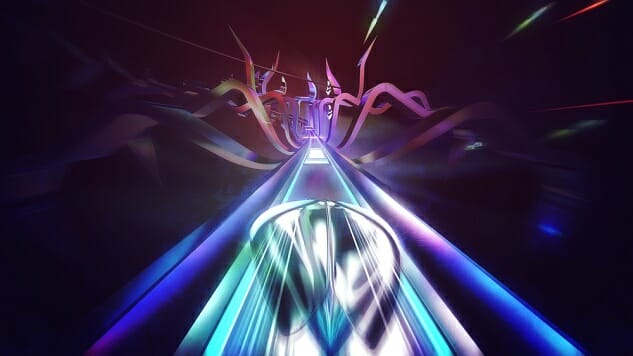Thumper is Frightening, Claustrophobic and Completely Glorious

Press releases usually make no impact upon me. I usually don’t even read them. (Sorry, all my friends in the PR industry!) There’s one from 2001 that I think about all the time, though. It’s the press release that Jagjaguwar issued alongside Oneida’s Anthem of the Moon album, where the writer (probably a band member, and probably writing with intentionally overblown rhetoric in order to see how gullible the music journalists of the day could be) declares that “the world has forgotten a huge part of the critical essence of the psychedelic experience.” The one-sheet specifically mentions “anxiety, dislocation, alienation and half-formed terror” as neglected tenets of psychedelia, ones that could be found on Oneida’s record (and, indeed, most of the albums they’ve released since), touting the sense of “exhaustion, ecstasy and paranoia” that defined their music. It’s been over 15 years since I first read that thing, and it still pops up in my head whenever I think about psychedelic music (which is something I think about a lot.) Paranoia, fear and claustrophobia are powerful sensations, and when a work successfully taps into them, really makes you feel them, it’s something you won’t soon forget.
That’s what Thumper does, more than any game I’ve ever played before.
It wouldn’t take much editing to make that press release work perfectly for Thumper. This is a rhythm game that intentionally runs counter to almost everything you’d expect from a rhythm game. Instead of club-ready dance music, soothing light shows and the warm hum of synesthesia, Thumper wants to discomfort us. It wants to leave us confused and afraid, overwhelmed by speed and the visual eruptions that happen when we don’t do what we’re supposed to. The track our scarab-like vehicle rockets through isn’t a playfield for our fingers to dance upon; it’s a tightly enclosed, claustrophobic space where we have to perfectly time split-second reactions to stay alive, pushing a button here, holding it down there, banking left and right with little notice, all while the track twists and slopes in unpredictable patterns, often with snaking tendrils writhing out into the darkness around us. Most rhythm games want to replicate the best time you could possibly have at a rave; Thumper wants you to feel like you’re shaking on the floor of a bathroom stall, praying for those weird shapes and sounds that surround you to go away.
Like a rhythm game, the music is crucial to creating Thumper’s atmosphere. It doesn’t sound like any rhythm game that’s ever existed before, though. Thumper’s music sounds like something that would get raved about in The Wire (the magazine, not the TV show), something that would be released by Load Records, something that you’d hear on a good college radio station, if good college radio stations actually still existed anywhere. It’s heavily percussive, but these aren’t really beats you can dance to; they’re complex, prog-like rhythms with heavy, pounding, foreboding drums. Each beat has a weight to it, like it’s reverberating through a canyon, and when overlaid with drones and ambient sheets of noise it adds up to a soundtrack as cold and brutal as the game itself. The music can be suffocating even without headphones on. If you didn’t know that Brian Gibson of the essential noise band Lightning Bolt was one of the two designers responsible for Thumper, it would make immediate sense as soon as you found out. The soundtrack doesn’t sound like Lightning Bolt (it reminds me more of, I don’t know, fragments of various krautrock records, or some of Onedia’s later, more abstract albums) but it’s similarly challenging and similarly overpowering.